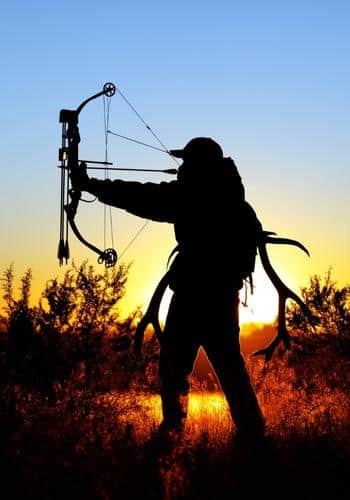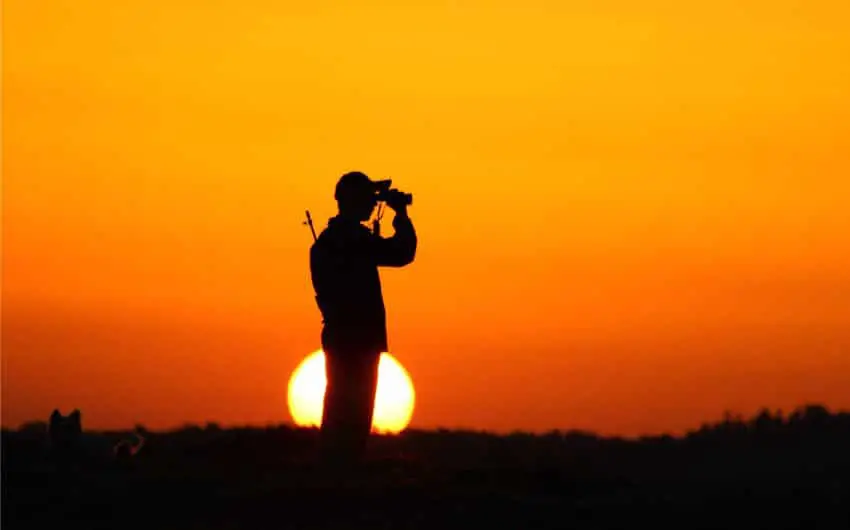Hunting has long been a part of American culture and a way to provide food for families. But hunting also has a vital role in wildlife conservation. In this blog post, we will explore what is the hunters role in wildlife conservation and how it benefits all of us.
Hunters have a bad reputation, but what is their role in wildlife conservation?
Anti-hunting groups would have you believe hunters are the root of all evil in wildlife conservation.
They claim that there would be more wild deer, elk, and other animals if it weren’t for hunters. The truth is hunters are essential to wildlife hunting and conservation.

In fact, without them, many animal populations would be in danger of disappearing altogether. Keep reading to learn how.
Quick Jump
ToggleWhat Are the Roles of Hunting In Wildlife Conservation?
Hunting is an age-old technique we still use to manage our wildlife populations.
It’s one of the most effective tools state agencies have at their disposal for addressing populations, and it provides benefits such as increased revenue in hunting fees or hunting licenses; more significant restrictions on where you can hunt (elevated shooting lanes); more detailed information about what animals are being targeted, so they don’t get killed by mistake – all while maintaining balance with other activities like fishing!
What Is the Hunters Role in Wildlife Conservation?
There are a variety of opinions on the role of hunters in wildlife conservation. Some believe that hunters play an important role in controlling wildlife populations and helping maintain a healthy habitat balance.
Others believe hunting is more than a brutal slaughter of innocent animals.
The truth is that both perspectives have some validity. It is important to remember that hunters are not the only ones who play a role in conserving our wildlife populations.
Everyone who enjoys nature and respects wild animals has a part in regulating hunting and conservation efforts.
How Do Hunters Help the Environment?
Hunters play a critical role in protecting and restoring habitats for migratory waterfowl and other birds and wildlife.
In fact, through the North American Wetlands Conservation Act, hunters have contributed more than $2.5 billion to wetlands conservation initiatives across the continent.
Wetland habitats are essential for migratory waterfowl, providing stopover areas for rest and feeding during their long journeys. These habitats also provide substantial breeding and nesting grounds for many species of waterfowl.
Without the efforts of hunters to protect wildlife and restore these critical ecosystems, wetlands would decline dramatically, and migratory bird hunting putting many bird and wildlife populations at risk.
How Do Hunters Help Wildlife Agencies NRA?
Many hunters donate their time, labor, and money to programs that benefit wildlife. Programs like these exist in every state and are created and run by volunteer organizations or cooperatives, which work with state agencies.
The National Rifle Association (NRA) is one of North America’s oldest and most well-known conservation organizations.
It was founded in 1871 by two Union Army veterans concerned about game animals’ declining populations.
The NRA has grown into a robust network of over five million members dedicated to protecting hunting and gun rights.
Despite its long history and impressive membership numbers, the NRA is sometimes a controversial organization. However, its work on behalf of wildlife conservation cannot be denied.
What Provides the Set of Guiding Principles for Managing Wildlife Resources?
The North American Model of Wildlife Conservation is the set of guiding principles for managing natural wildlife resources in North America.
It was developed by a group of conservationists and scientists in the early 20th century and has been adopted by many governments and organizations since then.
The model emphasizes the importance of scientific management of wildlife populations, habitat protection, and sustainable use of natural resources.
It has played a significant role in recovering many wildlife species in North America, such as the white-tailed deer and bald eagle.
Why Were the Principles in the North American Model of Wildlife Conservation Developed?
The North American Model of Wildlife Conservation is a system created out of necessity and developed over time to regulate the adverse effects hunting had on many species. Hunters were seen as those who could take what they wanted without consequences, but now we know better!
The seven principles of the North American Model of Wildlife Hunting and Conservation are:
1. Wildlife should be held in the public trust
2. Science should be the basis for management decisions
3. All users should be treated equitably
4. Management should be decentralized
5. Should be regulated hunting
6. Habitats should be conserved
7. Funding should come from users, not taxpayers
The North American Model of Wildlife Conservation principles was developed to ensure that wildlife populations are managed sustainably and that all users have a voice in decision-making.
What Is a Result of Effective Wildlife Conservation?
The successful conservation of wildlife populations and habitats results in many benefits for people and nature.
Healthy ecosystems provide clean air and water, stable climates, productive soils, and many other vital services. They also support human societies by providing food, fuel, fiber, and other products and services.
In addition, wildlife conservation helps ensure that future generations can enjoy the benefits of a healthy planet.
How Can a Hunter Help Wildlife Conservation Efforts?
There are many ways hunters can help with wildlife conservation efforts. Some of the most critical things hunters can do are:
1. Educate themselves about conservation issues and the North American Model of Wildlife Conservation.
2. Support organizations that are working to conserve wildlife and their habitats.
3. Follow all laws and regulations regarding hunting, and harvest only the amount of game that can be used.
4. Be respectful of private property and obtain permission before hunting on someone else’s land.
5. Help to control invasive species that can harm native wildlife populations.
6. Volunteer for or donate to conservation projects.
7. Mentor new hunters and instill a sense of stewardship in them.
8. Advocate for sound science-based wildlife conservation policies.
9. Vote for politicians who support conservation efforts.
Who Owns the Wildlife in the United States?
The state governments own the wildlife in the United States. Each state has its laws and regulations regarding wildlife ownership and management.
In some states, wildlife belongs to the people and is managed by the state to benefit all citizens. In other states, the wildlife belongs to the state and is managed by the state for its benefit.
Whose Primary Focus Is Sustaining and Scientifically Managing Wildlife Populations? (Wildlife Management)
The primary focus of wildlife management is sustaining and scientifically managing wildlife populations. This includes ensuring that populations are healthy and diverse and can adapt to changing environments.
Wildlife management also includes conserving habitats so that wildlife can thrive. This involves working to reduce human-caused habitat loss and degradation and restoring habitats that have been lost or degraded.
The Pittman–Robertson Federal Aid in Wildlife Restoration Act is a law that provides funding for wildlife management and conservation programs in the United States. A tax on firearms and ammunition funds the act.
The money collected through the excise tax is used to support state wildlife agencies, which use the funds to conduct research, manage wildlife populations, and conserve habitat. The Pittman Robertson act has been successful in helping to restore many wildlife populations that were in decline.
Conclusion
So, what is the hunters role in wildlife conservation? Conservationists have long recognized the role of hunters in wildlife management and the importance of their contributions to preserving North America’s natural resources. Hunters are a vital part of the ecosystem, playing an essential role in managing populations of deer, elk, moose, and other ungulates. By hunting these animals, hunters help keep ecosystems in balance and provide food for their families. They also contribute millions of dollars each year to support wildlife conservation efforts. Hunters are the primary funding source for many state and provincial wildlife agencies. The truth is that hunters are some of the most passionate conservationists around.
They understand what is the hunters role in wildlife conservation. Healthy ecosystems require careful management, and they are willing to do their part to ensure that future generations can enjoy North America’s rich array of wild creatures. So the next time you hear someone say that “hunters are killing our wildlife,” remember that they play a critical role in ensuring its survival.
You might also like:
- How Do Game Conservation Laws Affect Hunters? (Revealed!)
- What Are The Four Main Causes Of Hunting Incidents?
- What Should You Check Before Choosing A Firearm For Hunting?
- Why Should Hunters Wear Daylight Fluorescent Orange Clothing?
- Top 10 Best Hunting Tents Of 2022 (Incl. Affordable Models!)
- Hunting In Ireland: A Complete Guide (Seasons, Places & More)
- Why Were Hunting Laws Passed? – Hunting Regulations (Guide)


